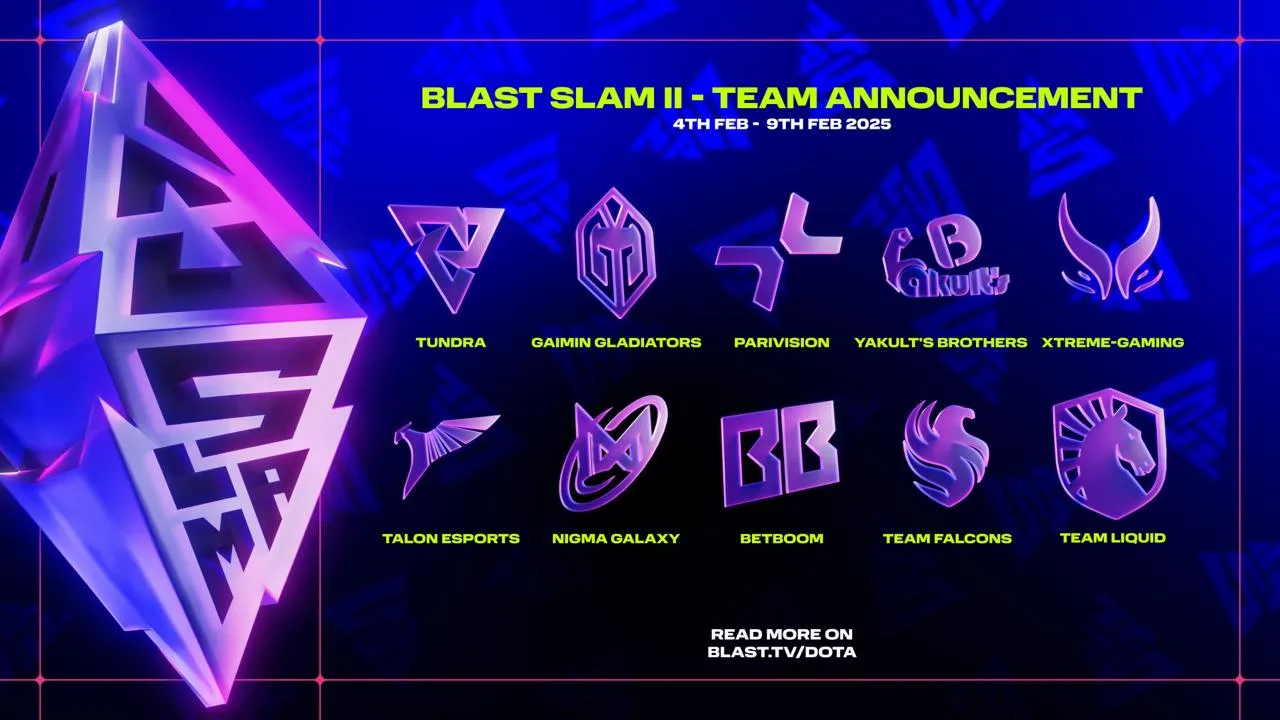The world of professional Dota 2 is a volatile arena, perpetually churning with the hopes and anxieties of its teams. No period encapsulates this dynamism quite like the aftermath of The International, where dreams are either realized or shattered, inevitably leading to the dreaded—or perhaps liberating—roster shuffle. As teams settle into their new configurations, the community watches with bated breath, eager to see if these gambits will pay off. The BLAST Slam IV tournament, with its substantial prize pool and highly anticipated LAN playoffs in Singapore, serves as one of the first critical proving grounds for these reshaped squads.
Amidst this unfolding drama, veteran Dota 2 analyst Khaled “sQreen” El-Habash has emerged with a characteristically blunt assessment of some of the early performances. His recent commentary, specifically targeting the outcomes for BetBoom Team and Aurora Gaming during the group stage, cuts straight to the core of the issue. According to sQreen, the struggles witnessed are not merely coincidental but a direct consequence of the post-TI roster adjustments. His succinct, almost poetic, observation captures the essence of his critique:
“They got what they deserved for shuffling.”
The Post-TI Conundrum: A Cycle of Hope and Despair
For those unfamiliar with the brutal rhythm of Dota 2 esports, the period following The International (TI) is a turbulent time. Teams that fall short of their lofty aspirations often resort to drastic measures, shuffling players in and out in search of that elusive, championship-winning synergy. It`s a high-stakes poker game where a wrong move can set a team back months, or even a full season. sQreen`s comment, while harsh, reflects a common sentiment among seasoned observers: a deep skepticism towards knee-jerk roster changes, particularly when they disrupt established chemistry.
His remark implies a certain inevitability; that the perceived benefits of a shuffle might not outweigh the immediate downsides of rebuilding team cohesion from scratch. In a game as intricate and teamwork-dependent as Dota 2, even minor adjustments can ripple through strategies, communication, and overall execution.
BetBoom Team`s Bold Move: A New Carry, New Challenges
One of the teams under sQreen`s critical gaze is the formidable BetBoom Team. Known for their aggressive playstyle and high-ceiling individual talents, BetBoom made a significant change to their core lineup. Post-TI, they saw Ivan “Pure~” Moskalenko step into the crucial carry role, replacing Ilya “Kiritych” Ulyanov. The carry position in Dota 2 is arguably the most impactful, often dictating the pace and late-game potential of a squad.
While Pure~ is an undeniably talented player, integrating a new carry is rarely a seamless process. It demands adjustments from every other position – supports need to learn new laning habits, mid-laners new tempo preferences, and offlaners new engagement timings. If BetBoom Team’s early performance at BLAST Slam IV is indeed underperforming, sQreen suggests this is precisely the price they pay for disrupting their established dynamics. The expectation is that a team of BetBoom’s caliber should quickly adapt, but the reality of competitive pressure can be unforgiving.
Aurora Gaming`s Reconfiguration: Star Power vs. Synergy
Across the competitive landscape, Aurora Gaming also underwent substantial changes, bringing in new blood in the form of Rafli “Mikoto” Fathur and Chan “Oli” Chon Kien after the previous TI cycle. These are recognized talents, often lauded for their individual prowess. On paper, such additions could electrify a team and elevate its standing.
However, Dota 2 is more than the sum of its parts. Merging individual skill with cohesive team play is the ultimate challenge. Aurora Gaming, a team aiming to solidify its presence on the global stage, might be finding that assembling a roster of star players doesn`t automatically translate to immediate success. The early results at BLAST Slam IV seem to suggest that the time needed to forge true synergy, to truly become a single, potent unit, might be longer and more arduous than initially hoped.
BLAST Slam IV: An Early Litmus Test
The BLAST Slam IV tournament itself adds another layer of intrigue. Running from October 14 to November 9, it features 12 teams battling for a hefty $1 million prize pool. While the group stage is played online, the pressure is very real, as teams vie for spots in the prestigious LAN playoffs in Singapore. For teams like BetBoom and Aurora, a stumble in the group stage could mean a premature exit, amplifying the scrutiny on their roster decisions.
In the high-stakes environment of professional esports, time is a luxury few are afforded. Roster changes are gambles, and every tournament is an immediate test of their efficacy. As sQreen shrewdly points out, if a team chooses to reset and shuffle, they must be prepared for the immediate consequences—both positive and negative. The narrative of whether these reconfigured teams can overcome their initial hurdles and adapt mid-tournament remains a compelling storyline as BLAST Slam IV progresses.
The Unforgiving Nature of the Dota 2 Grind
sQreen`s commentary serves as a sharp reminder of the brutal, unsentimental nature of top-tier Dota 2. There`s little room for excuses and even less for sentimentality when it comes to roster decisions. Every player change, every strategic pivot, is scrutinized under the harsh glare of competition. His statement, “They got what they deserved for shuffling,” is perhaps less a condemnation and more a cold, hard fact of the competitive landscape.
Whether BetBoom Team and Aurora Gaming can turn the tide at BLAST Slam IV and prove sQreen`s early assessment premature remains to be seen. But one thing is clear: in the pursuit of the Aegis, every choice carries weight, and the immediate future of these reshuffled teams rests on their ability to quickly transform a collection of talented individuals into a cohesive, winning machine. The shuffling gambit has begun, and the cards are now on the table.

